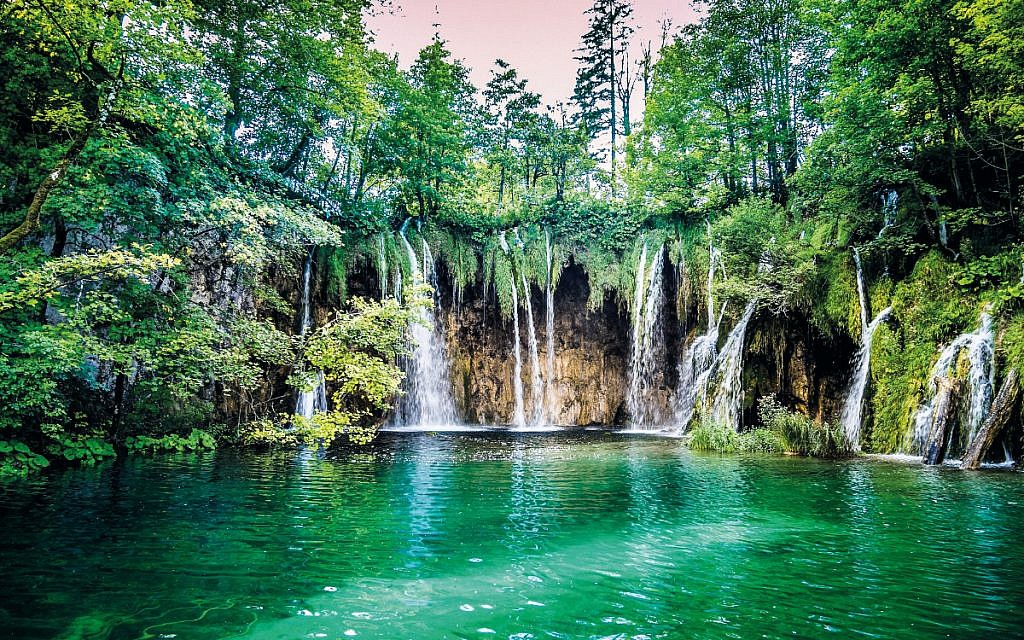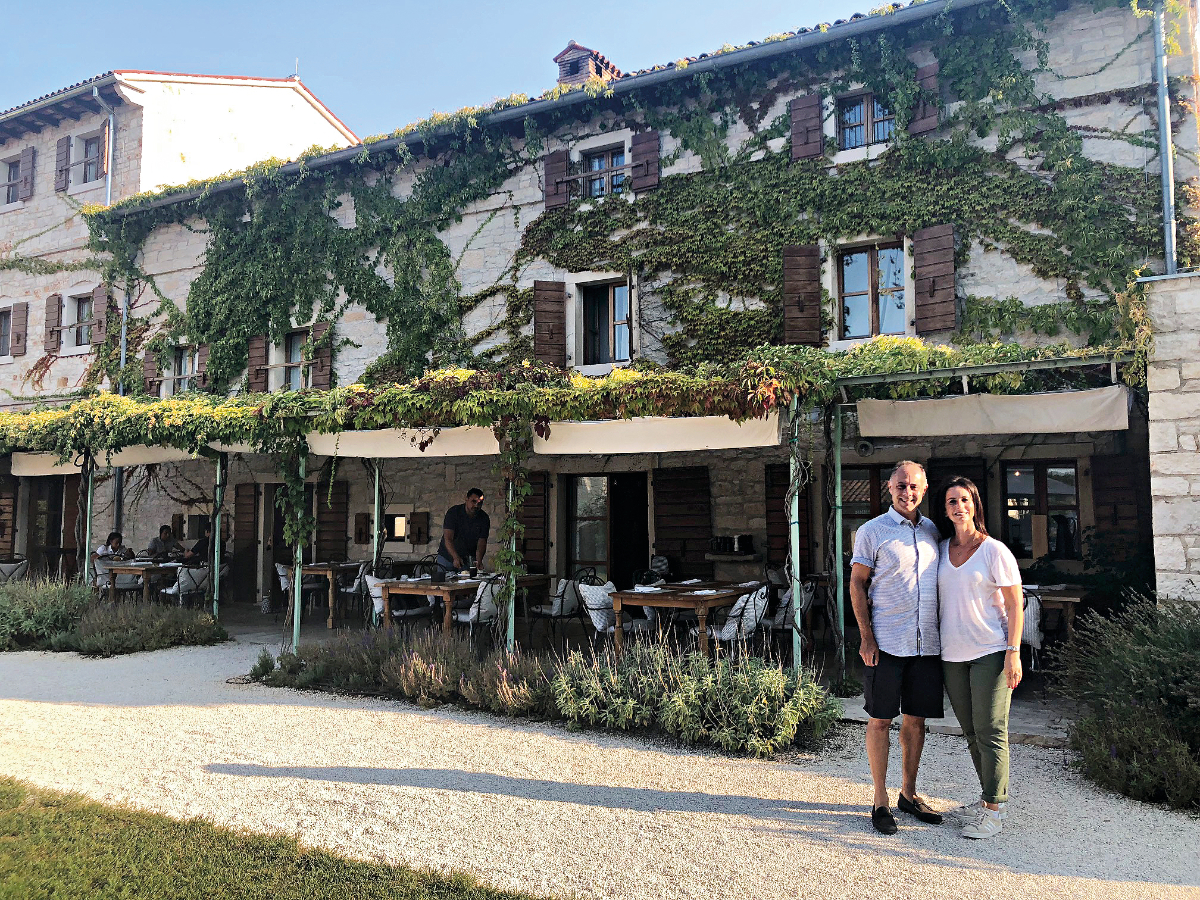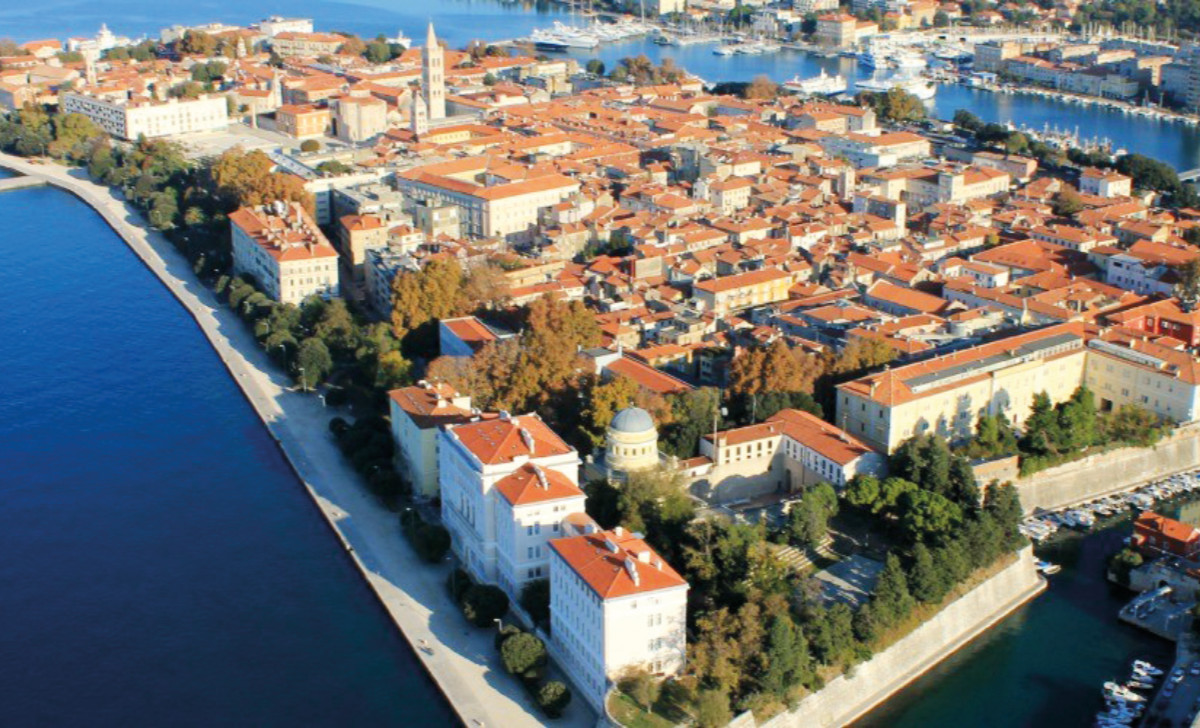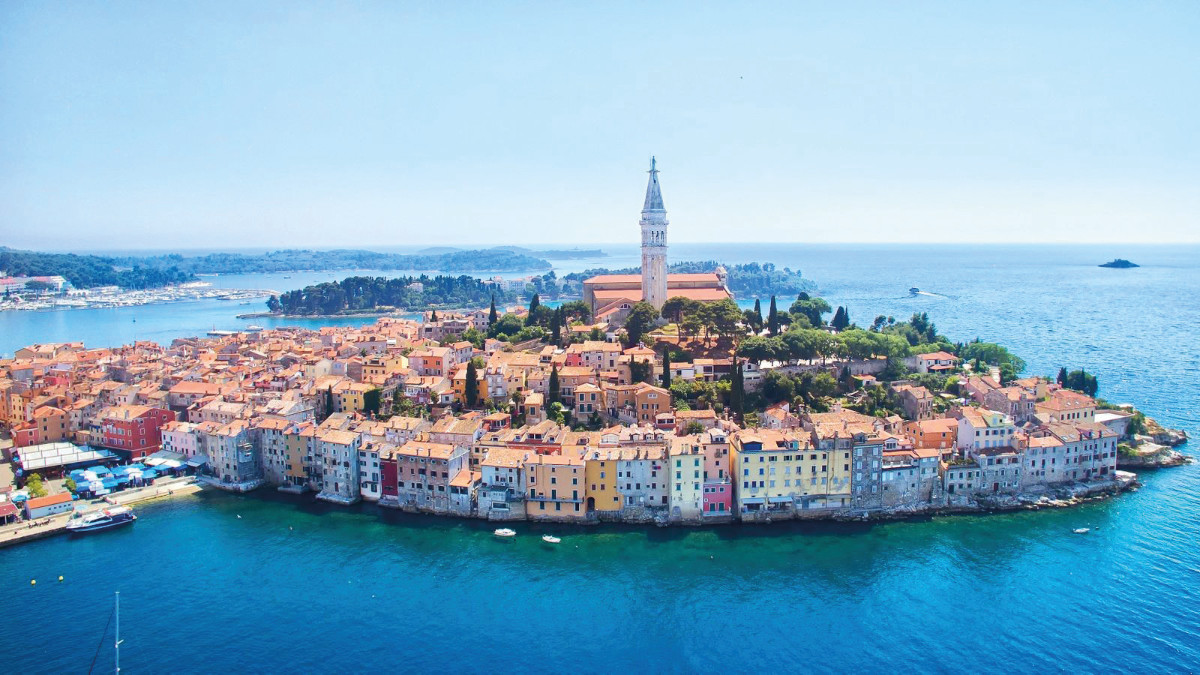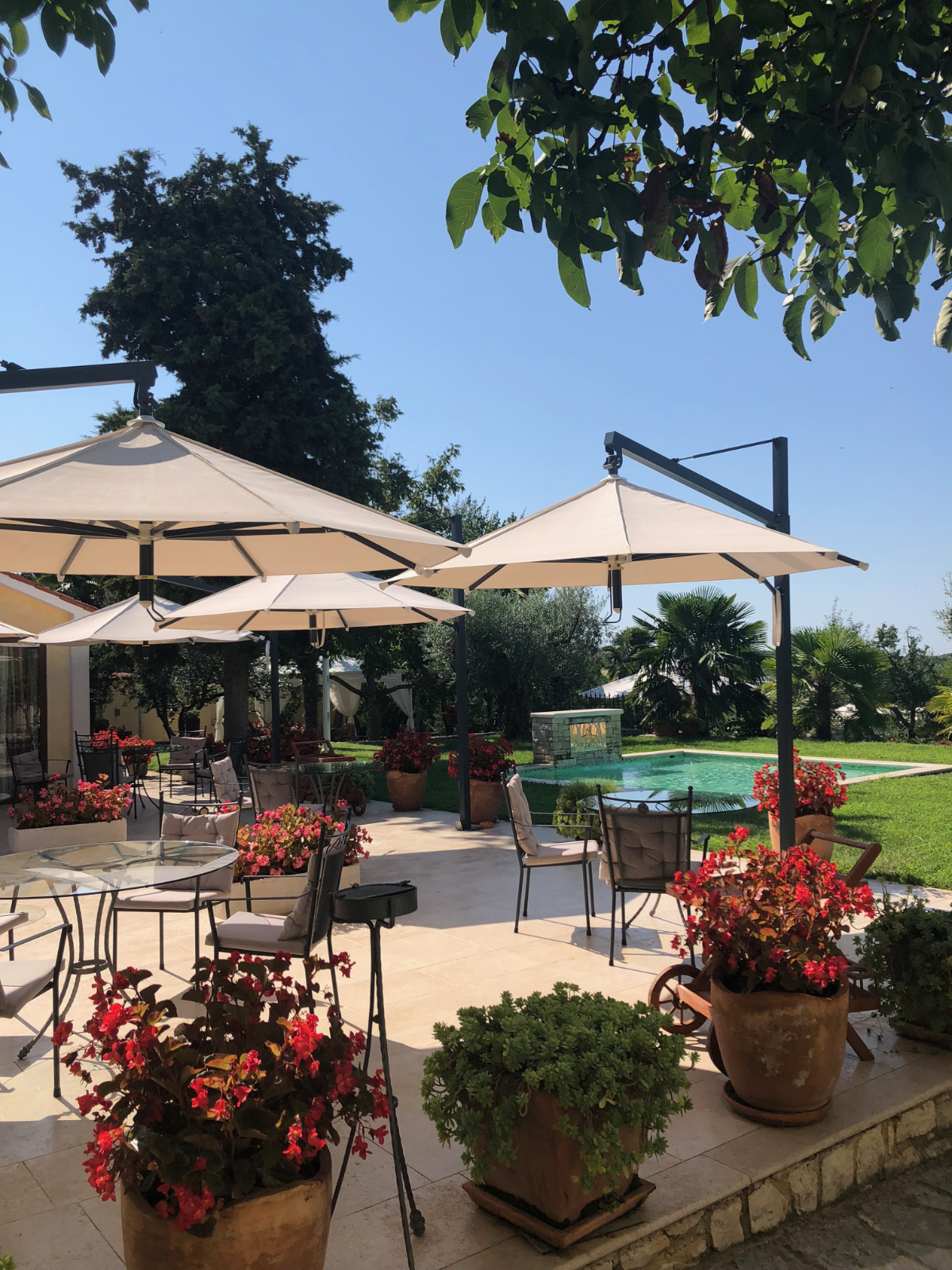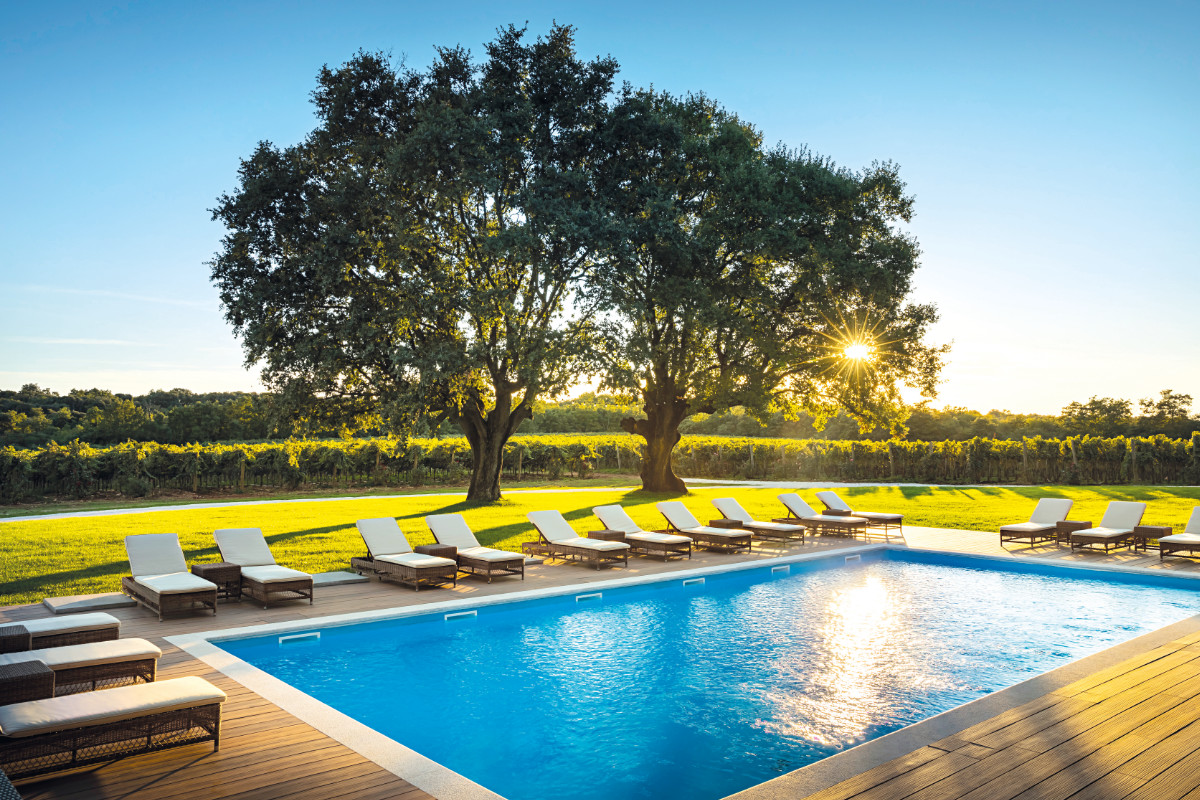Travel: Exploring unexpected Croatia!
Louisa and Simon Walters had a blissful time off the beaten track in the Balkans
Croatia’s popularity as a holiday destination has been growing steadily since 2013 when it joined the EU. The 11pm curfew on outdoor music in Ibiza has also raised the appeal of the summer-long music festivals on the Dalmatian coast. But with popularity comes predictability, and a trip to Croatia always includes Dubrovnik, Split or Hvar. But it doesn’t have to.
Last summer, we toured the northern and less-explored part of this beautiful country, a region known for its hilltop towns, magnificent countryside, Italian influence and, in August, the truffle season.
But first, a little culture in the form of the city of Zadar. An easy two-hour flight from London, Zadar is a delightful, unspoilt, uncommercialised city, full of charm, which completely comes alive at night. We stayed at Hotel Bastion, from where we ambled through the streets past the Sea Gate and the Land Gate, a square with five fountains that once supplied water to the city, and the imposing Church of St Donatus, now used for concerts.
Get The Jewish News Daily Edition by email and never miss our top stories Free Sign Up
We chanced upon an Andy Warhol retrospective at the Rector’s Palace and
a surprising number of really good menswear shops. There are loads of outdoor bars and lounges, which create a superb buzz, and lots of places for ice cream.
Best of all is the unique ‘sea organ’ – a construction of stone pipes under the sea causing the water to play music. Crowds gather there at sunset and it’s magical. At Pet Bunara restaurant, on a perfect-for-people-watching terrace in the Old Town, we feasted on stuffed turkey breast with apricots and almonds and discovered the joy of Croatian wines.
From Zadar, we drove inland to the Plitvice Lakes. This is Croatia’s most popular National Park and can be summed up in three words: Mag. Nifi. Cent. The lakes are jaw-droppingly beautiful, with see-to-the-bottom water in shades of blue never achieved by Farrow & Ball and forestry to rival California’s Yosemite Park, with theatrical waterfalls and walking trails, which have views that leave the Highlands of Scotland wanting.
This is daytripper/hiker territory, and accommodation choices are limited. Dinner options even more so… we stayed in a small lodge where we were offered ‘meat or fish’ to eat, ‘red or white’ to drink, and schnapps on tap.
Istria is a four-hour drive west, along winding narrow mountainous roads, tunnels as long as six miles, and gravity-defying bridges. The route took us through miles of nothingness and lots of villages until we arrived at ours, Brtonigla, home to the pretty San Rocco boutique hotel.
Everything about this family-run idyll consisting of comfortable bedrooms, friendly service and pretty gardens with trees laden with ripe figs is reminiscent of Italy in the 1990s. It also houses what is widely reputed to be the best restaurant in Istria.
We ‘fine’ dined on the pretty terrace, dipping fresh bread in the hotel’s own, rich, peppery olive oil, harvested from the olive trees that surround the pool, and enjoying course after course of truffle-enhanced dishes, plus a simple sea bream steamed with herbs from the little herb border we could see from the table.
During the day, we lazed by the pool, and when we got hungry we ambled
into the sleepy, ramshackle village for a simple lunch of truffle frittata. From this base, we visited a host of hilltop towns. Groznjan, a haven for artists, is full of little galleries, cobbled streets and alleyways. It is reached by twisting roads up mountains and through valleys, before you leave the car outside the medieval walls and proceed on foot into the 16th century. Views from these heights take your
breath away.
In Oprtalj, an almost abandoned medieval hilltop village – only 55 people live here – we feasted on tagliatelle in a creamy sauce. We ate dinner at Konoba Mondo high in the hills in Motovun, a village whose ancient history is evident in every cobblestone, watching the sun set over the valley to the strains of a lone saxophonist – quite the most romantic spot I’ve ever eaten in.
We had beautifully tender beefsteak at Stari Podrum, a lively, modern restaurant totally at odds with its location in countryside so remote that there is no phone signal and no other building for at least 2km. (We drove back from here on pitch dark roads in a thunderstorm with lightning that brilliantly lit up the sky – terrifying but thrilling.)
Rovinj, the largest and best known of the hilltop towns, climbs up from the sea and is highly reminiscent of the Italian Riviera. Here we dined at La Puntulina, watched the magnificent sunset, tucked into seabream and sipped cocktails on the rocks – and by that I mean our table position, not the ice in our drinks.
We ended our stay with two nights in sublime luxury at the Meneghetti Estate, a winery with a 25-bedroom Relais & Chateau hotel at the end of two miles of rocky dirt track.
This nirvana offers peace, solitude, acres and acres of vineyards and olive groves, two beautiful swimming pools, vast bedrooms and magnificent bathrooms all in an elegant, rustic style. There’s a shuttle to the (rocky) beach a mile away, bikes to hire and spa facilities to indulge in.
Dinner is a six-course tasting menu featuring a wonderful summer ceviche, sublime artichoke and truffle tortellini and tender beef cheeks with dumplings, plus wines to match from grapes that are grown a few metres from your table. Breakfast is a lavish affair laid out in the country style kitchen.
Our final meal in Istria, at Barba Danilo, was in the hands of an endearingly passionate restaurateur in an idyllic spot in the middle of a campsite – incongruous but true. Black truffle ice cream anyone?
Croatia fact box
- Ryanair Stansted to Zadar approx £68 one way
- Hotel Bastion, Zadar – www.hotel-bastion.hr
- Plitvice Lodge, Plitvica – www.plitvicalodge.com
- San Rocco, Brtonigla – www.san-rocco.hr
- Meneghetti, Bale – www.meneghetti.hr
READ MORE – TRAVEL SUPPLEMENT:
- Super duper Aruba! 365-days of sun on One Happy Island
- Berlin beckons
- For the love of Lisbon
- Why Portugal’s the most wanted destination post-Brexit
- Wonderful Copenhagen!

Thank you for helping to make Jewish News the leading source of news and opinion for the UK Jewish community. Today we're asking for your invaluable help to continue putting our community first in everything we do.
For as little as £5 a month you can help sustain the vital work we do in celebrating and standing up for Jewish life in Britain.
Jewish News holds our community together and keeps us connected. Like a synagogue, it’s where people turn to feel part of something bigger. It also proudly shows the rest of Britain the vibrancy and rich culture of modern Jewish life.
You can make a quick and easy one-off or monthly contribution of £5, £10, £20 or any other sum you’re comfortable with.
100% of your donation will help us continue celebrating our community, in all its dynamic diversity...
Engaging
Being a community platform means so much more than producing a newspaper and website. One of our proudest roles is media partnering with our invaluable charities to amplify the outstanding work they do to help us all.
Celebrating
There’s no shortage of oys in the world but Jewish News takes every opportunity to celebrate the joys too, through projects like Night of Heroes, 40 Under 40 and other compelling countdowns that make the community kvell with pride.
Pioneering
In the first collaboration between media outlets from different faiths, Jewish News worked with British Muslim TV and Church Times to produce a list of young activists leading the way on interfaith understanding.
Campaigning
Royal Mail issued a stamp honouring Holocaust hero Sir Nicholas Winton after a Jewish News campaign attracted more than 100,000 backers. Jewish Newsalso produces special editions of the paper highlighting pressing issues including mental health and Holocaust remembrance.
Easy access
In an age when news is readily accessible, Jewish News provides high-quality content free online and offline, removing any financial barriers to connecting people.
Voice of our community to wider society
The Jewish News team regularly appears on TV, radio and on the pages of the national press to comment on stories about the Jewish community. Easy access to the paper on the streets of London also means Jewish News provides an invaluable window into the community for the country at large.
We hope you agree all this is worth preserving.
-
By Brigit Grant
-
By Laurent Vaughan - Senior Associate (Bishop & Sewell Solicitors)
-
By Laurent Vaughan - Senior Associate (Bishop & Sewell Solicitors)
-
By Laurent Vaughan - Senior Associate (Bishop & Sewell Solicitors)
-
By Laurent Vaughan - Senior Associate (Bishop & Sewell Solicitors)


